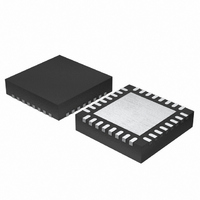DF38602RFT10 Renesas Electronics America, DF38602RFT10 Datasheet - Page 139

DF38602RFT10
Manufacturer Part Number
DF38602RFT10
Description
MCU 3V 16K 32-QFN
Manufacturer
Renesas Electronics America
Series
H8® H8/300H SLPr
Datasheet
1.DF38602RFT10.pdf
(554 pages)
Specifications of DF38602RFT10
Core Processor
H8/300H
Core Size
16-Bit
Speed
10MHz
Connectivity
I²C, IrDA, SCI, SSU
Peripherals
POR, PWM, WDT
Number Of I /o
13
Program Memory Size
16KB (16K x 8)
Program Memory Type
FLASH
Ram Size
1K x 8
Voltage - Supply (vcc/vdd)
2.7 V ~ 3.6 V
Data Converters
A/D 6x10b
Oscillator Type
Internal
Operating Temperature
-20°C ~ 75°C
Package / Case
32-QFN
Lead Free Status / RoHS Status
Contains lead / RoHS non-compliant
Eeprom Size
-
Other names
HD64F38602RFT10
HD64F38602RFT10
HD64F38602RFT10
Available stocks
Company
Part Number
Manufacturer
Quantity
Price
Company:
Part Number:
DF38602RFT10V
Manufacturer:
Renesas Electronics America
Quantity:
135
- Current page: 139 of 554
- Download datasheet (4Mb)
6.3.1
Table 6.2 shows the boot mode operations between a reset released and a branch to the
programming control program.
This LSI includes a system clock oscillator which is operated by a resonator or an external clock
and on-chip oscillator.
In Boot Mode, since the system clock oscillator is selected, connect a resonator to OSC1 and
OSC2, or an external clock signal to OSC1.
1. When the boot mode is used, the flash memory programming control program must be
2. SCI3 is set to the asynchronous mode, and the transfer format as follows: 8-bit data, 1 stop bit,
3. When the boot program is initiated, this LSI measures the low-level period of serial
4. After matching the bit rates, SCI3 transmits one byte of H'00 to the host to indicate the
5. In boot mode, a part of the on-chip RAM area is used by the boot program. The programming
prepared in the host beforehand. Prepare a programming control program in accordance with
the description in section 6.4, Flash Memory Programming/Erasure.
and no parity. The inversion function of the TXD and RXD pins by SPCR is set to “Not to be
inverted,” so do not put inverters between the host and this LSI.
communication data (H'00) continuously transmitted in asynchronous mode from the host.
This LSI then calculates the bit rate of the transfer from the host, and adjusts the SCI3 bit rate
to match that of the host. The reset signal should be negated while the RXD pin is driven high.
The RXD and TXD pins should be pulled up on the board if necessary. After the reset signal is
negated, it takes approximately 100 states before this LSI is ready to measure the low-level
period.
completion of bit rate adjustment. The host should confirm that it has received this adjustment
end code (H'00) normally and then transmit one byte of H'55 to this LSI. If reception could not
be performed normally, initiate the boot mode again by a reset. Depending on the host's
transfer bit rate and system clock frequency of this LSI, there will be a discrepancy between
the bit rates of the host and this LSI. To operate the SCI properly, set the host's transfer bit rate
and system clock frequency of this LSI within the ranges listed in table 6.3.
control program transmitted from the host can be stored in the area from H'FB80 to H'FF7F.
The boot program area cannot be used until control of the execution is switched from the boot
program to the programming control program.
Boot Mode
Rev. 3.00 May 15, 2007 Page 105 of 518
REJ09B0152-0300
Section 6 ROM
Related parts for DF38602RFT10
Image
Part Number
Description
Manufacturer
Datasheet
Request
R

Part Number:
Description:
KIT STARTER FOR M16C/29
Manufacturer:
Renesas Electronics America
Datasheet:

Part Number:
Description:
KIT STARTER FOR R8C/2D
Manufacturer:
Renesas Electronics America
Datasheet:

Part Number:
Description:
R0K33062P STARTER KIT
Manufacturer:
Renesas Electronics America
Datasheet:

Part Number:
Description:
KIT STARTER FOR R8C/23 E8A
Manufacturer:
Renesas Electronics America
Datasheet:

Part Number:
Description:
KIT STARTER FOR R8C/25
Manufacturer:
Renesas Electronics America
Datasheet:

Part Number:
Description:
KIT STARTER H8S2456 SHARPE DSPLY
Manufacturer:
Renesas Electronics America
Datasheet:

Part Number:
Description:
KIT STARTER FOR R8C38C
Manufacturer:
Renesas Electronics America
Datasheet:

Part Number:
Description:
KIT STARTER FOR R8C35C
Manufacturer:
Renesas Electronics America
Datasheet:

Part Number:
Description:
KIT STARTER FOR R8CL3AC+LCD APPS
Manufacturer:
Renesas Electronics America
Datasheet:

Part Number:
Description:
KIT STARTER FOR RX610
Manufacturer:
Renesas Electronics America
Datasheet:

Part Number:
Description:
KIT STARTER FOR R32C/118
Manufacturer:
Renesas Electronics America
Datasheet:

Part Number:
Description:
KIT DEV RSK-R8C/26-29
Manufacturer:
Renesas Electronics America
Datasheet:

Part Number:
Description:
KIT STARTER FOR SH7124
Manufacturer:
Renesas Electronics America
Datasheet:

Part Number:
Description:
KIT STARTER FOR H8SX/1622
Manufacturer:
Renesas Electronics America
Datasheet:

Part Number:
Description:
KIT DEV FOR SH7203
Manufacturer:
Renesas Electronics America
Datasheet:











